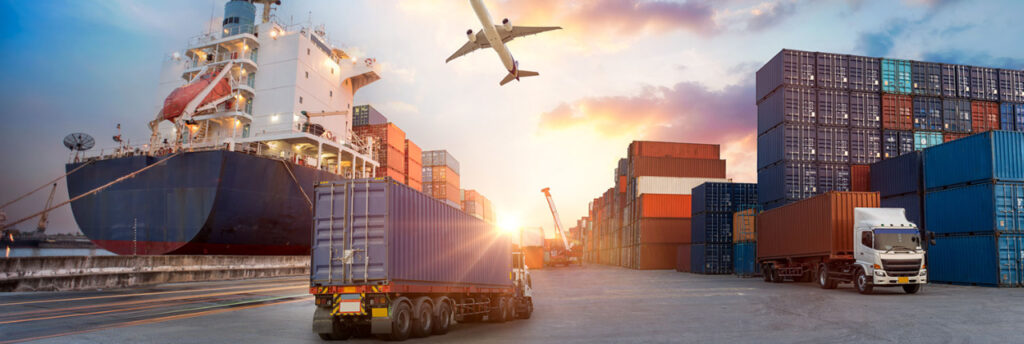I. Introduction
When it comes to shipping goods, choosing the right mode of transportation is crucial. Not only can the right mode help to ensure timely delivery and minimize the risk of damage or loss, but it can also have a significant impact on cost and efficiency. Understanding the different options available and their respective advantages and disadvantages is key to making an informed decision about the best mode of transportation for your specific needs.
In this blog, we will explore the three main modes of freight transportation: land, sea, and air. We will provide an overview of the various options within each mode, as well as the advantages and disadvantages of each option, to help you choose the right mode for your needs.
II. Land Freight
Land freight transportation refers to the movement of goods by road or rail. There are several options available for land freight transportation, each with its own set of advantages and disadvantages. Some of the main options include:
Road: Trucking is a common mode of land freight transportation, particularly for shorter distances or for smaller loads that don’t require specialized equipment. Trucks can be hired on a one-time basis or as part of a dedicated fleet, and they offer flexibility in terms of pickup and delivery locations. However, trucking can be more expensive than other modes of land freight transportation, and it may not be suitable for larger or heavier loads.
Rail: Shipping by rail can be a cost-effective and efficient option for longer distances or larger loads. Rail transport is often used for bulk commodities or heavy machinery, and it can offer advantages such as reduced fuel costs and reduced impact on the environment. However, rail transport may not be as flexible as other modes, with limited pickup and delivery locations, and it may not be suitable for time-sensitive or perishable goods.
Intermodal: Intermodal transportation refers to the movement of goods using a combination of modes, such as truck and rail. This can be a good option for combining the advantages of both modes, such as the flexibility of trucking with the cost-effectiveness of rail. However, intermodal transportation can be more complex to coordinate and may require additional handling, which can increase costs.
III. Sea Freight
Sea freight transportation refers to the movement of goods by ship. There are several options available for sea freight transportation, each with its own set of advantages and disadvantages. Some of the main options include:
Container ships: Container ships are designed to carry standard-sized shipping containers, which can be loaded and unloaded using cranes or specialized handling equipment. Container ships are a common mode of sea freight transportation, particularly for larger or higher-volume shipments. However, container ships may not be suitable for oversized or irregularly shaped cargo, and they may not offer as much flexibility in terms of pickup and delivery locations as other modes.
Breakbulk vessels: Breakbulk vessels are designed to carry non-containerized cargo, such as bulk commodities, project cargo, or heavy machinery. Breakbulk vessels offer more flexibility in terms of the types of cargo they can carry, but they may not be as efficient or cost-effective as container ships, particularly for smaller shipments.
Roll-on/roll-off ships: Roll-on/roll-off ships are designed to carry vehicles or other rolling cargo, such as trailers or container chassis. Roll-on/roll-off ships can be a cost-effective option for shipping vehicles or other rolling cargo, but they may not be suitable for other types of cargo.
IV. Air Freight
Air freight transportation refers to the movement of goods by air. There are several options available for air freight transportation, each with its own set of advantages and disadvantages. Some of the main options include:
Cargo planes: Cargo planes are specially designed to carry freight, and they offer a fast and reliable mode of transportation for time-sensitive or high-value shipments. However, cargo planes can be more expensive than other modes of air freight transportation, and they may not be suitable for larger or heavier loads.
Charter flights: Charter flights are a flexible option for air freight transportation, as they can be customized to meet specific needs or requirements. Charter flights can be a good option for specialized or oversized cargo, but they may be more expensive than other modes and may not offer as many regular scheduled flights.
V. Conclusion
When choosing the right mode of freight transportation for your needs, there are several factors to consider. These may include the distance of the shipment, the size and weight of the goods, the level of security required, the time sensitivity of the shipment, and the cost. It’s also important to consider any special handling requirements or regulations that may apply to your shipment, such as hazardous materials or temperature-controlled goods. Working with a freight forwarder or logistics provider can be helpful in navigating these considerations and choosing the right mode of transportation for your needs.
If you are unsure about which mode is best for your specific needs, don’t hesitate to reach out for help. At John Pipe International, we have a team of experts who can assist you in choosing the right mode of freight transportation for your shipment, based on your specific needs and priorities. Contact us today to learn more about our services and how we can help you navigate the process of shipping your goods.

